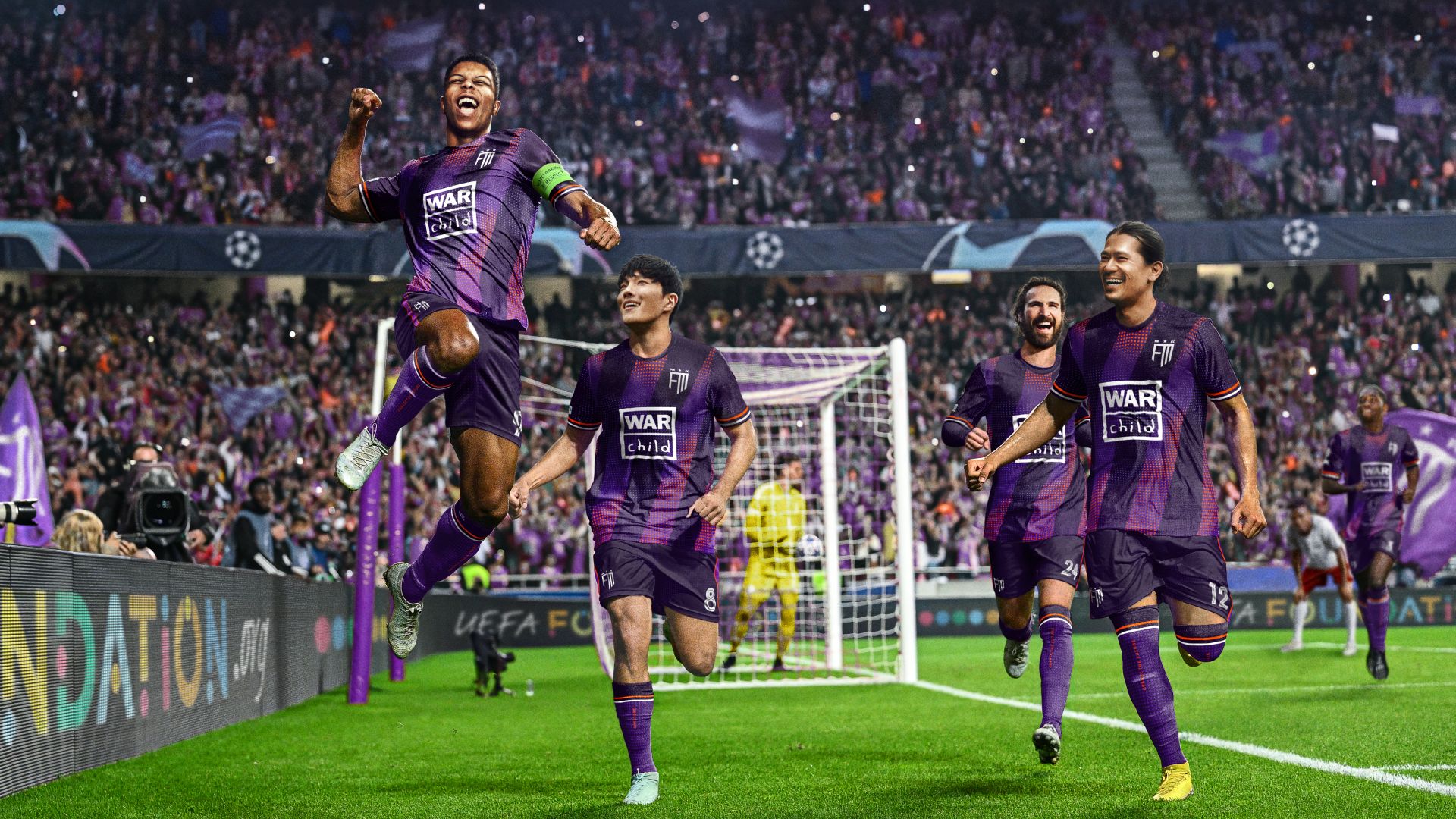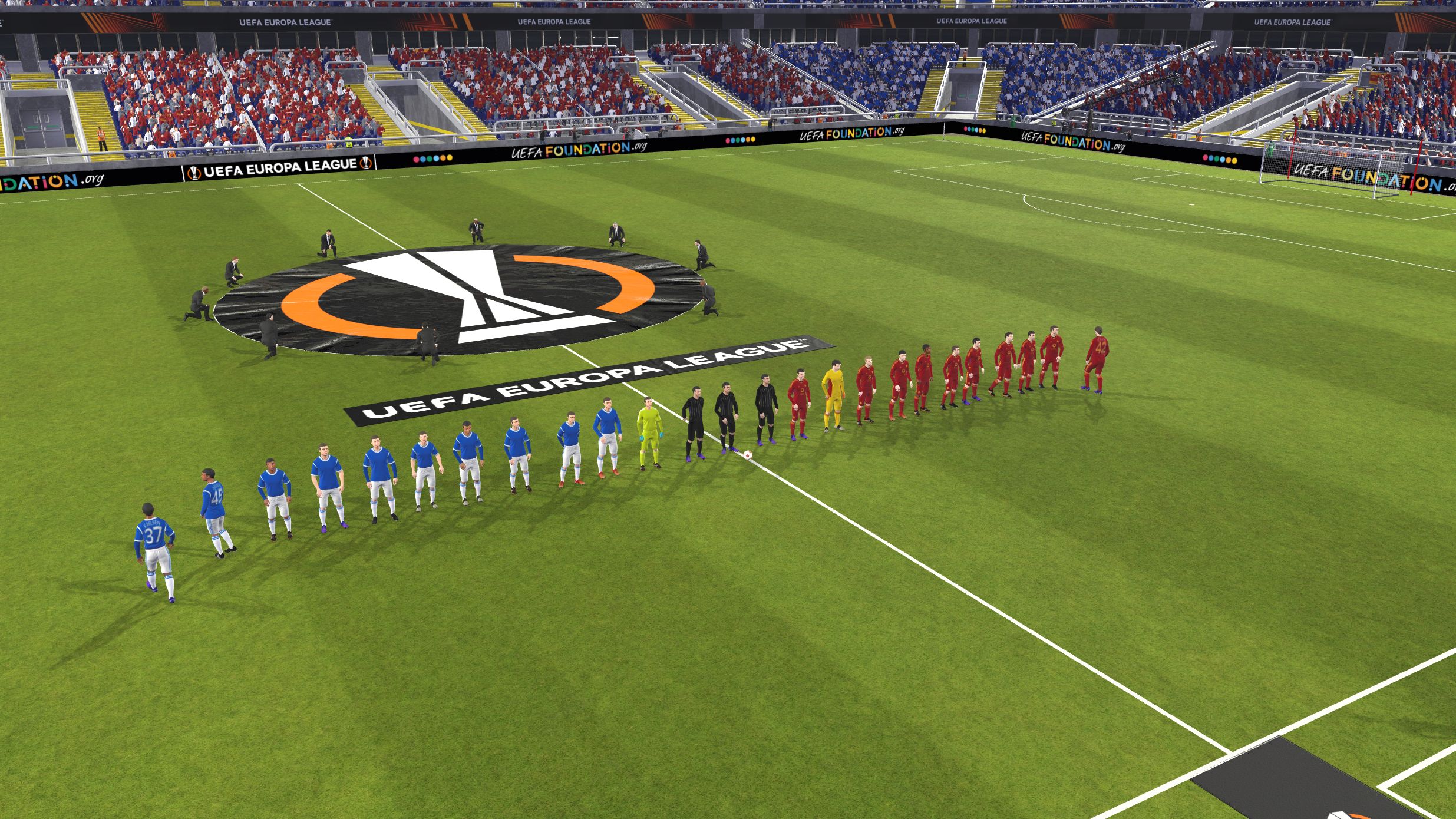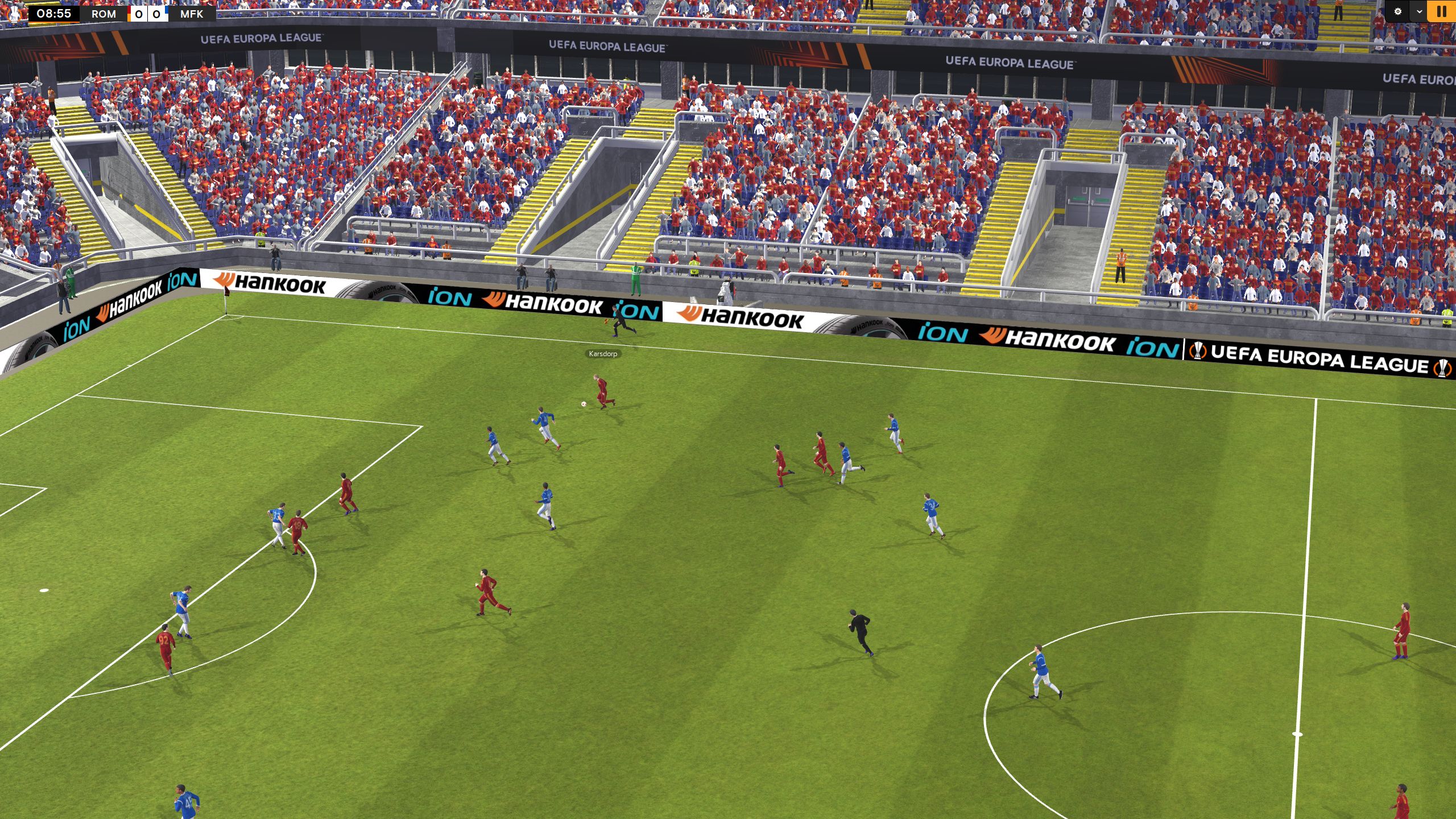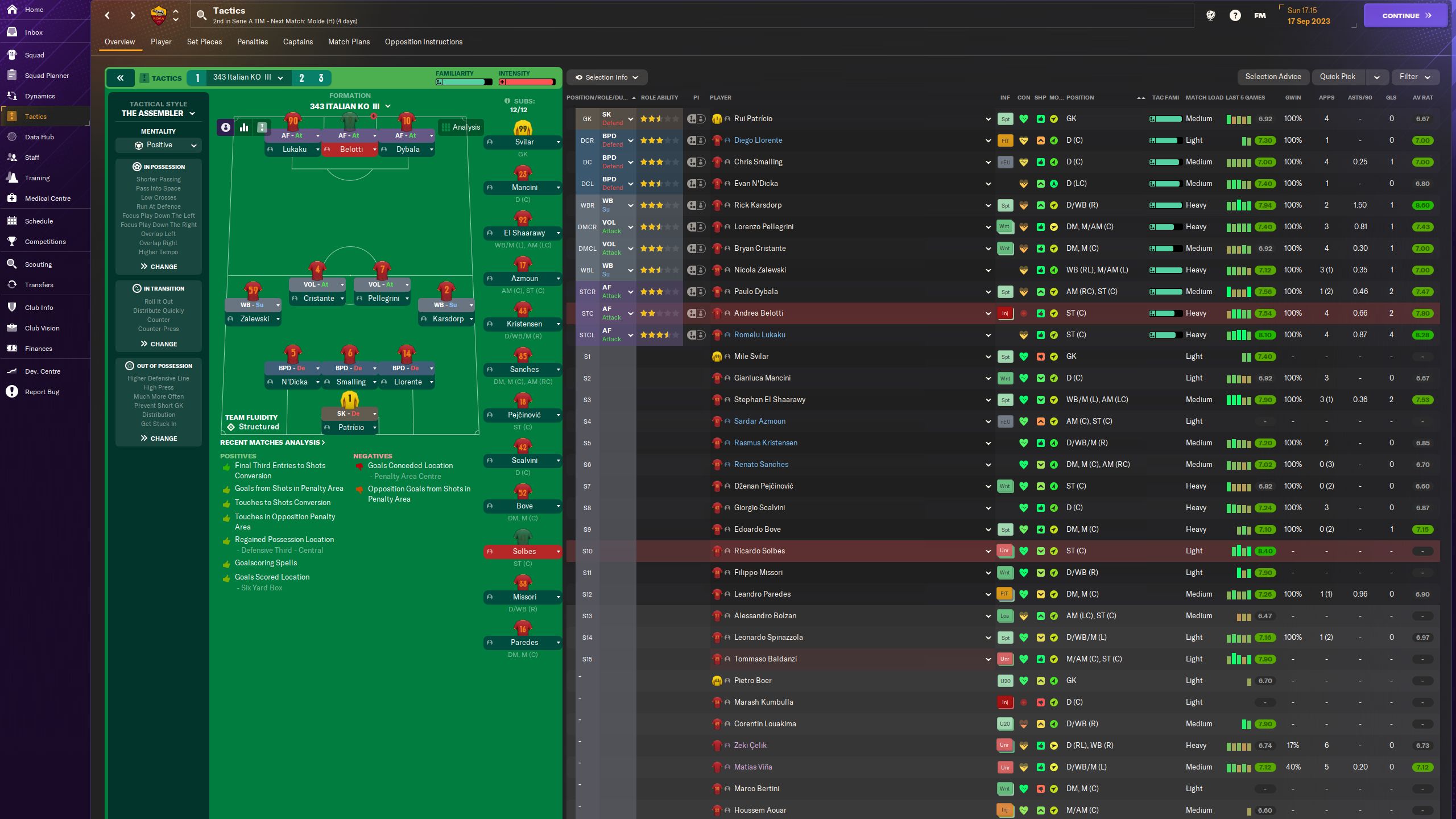
What is it? The latest in SI’s long-running, spreadsheet-heavy sports management sim series.
Release date November 6, 2023
Expect to pay $60/£45
Developer Sports Interactive
Publisher Sega
Reviewed on i7 9700K, RTX 2080 TI, 16GB RAM
Steam Deck TBA
Link Official site
The very best thing about Football Manager is how much of it exists only in your head. Whether by design or necessity, the series has always presented just enough information on the world of football to inflame your imagination and become notoriously invested. Simple spreadsheets of statistics become human players you feel actual emotional responses to. A menu showing the past winners of a particular domestic trophy makes your back straighten with pride. And the very best thing about Football Manager 2024 is that its new features deepen, rather than disrupt, that fantasy.
What’s new this year? Does it suddenly look like FIFA, or use Unreal Engine? Don’t be silly. This is the same yin-yang of information-heavy menu screens and text-based interactions, giving way periodically to a 3D match engine where your tactical creations play out on the pitch. It’s where late nights become troublingly early mornings and expletives are freely exchanged.

And often, that alone is enough. Even with the series' weakest entrants, that tick-tock of slow-paced, methodical consumption of super-accurate data from the world of football and adrenaline fueled matchday sequences will propel you forwards into multi-hundred-hour saves.
Football Manager can have an off-season for one of three reasons: either the new bits don’t move the needle so it feels like a season update, the new bits feel like chores, or worst of all they commit the cardinal sin of breaking your immersion. Coming off the back of a tough release last year which felt feature-light, FM24 wangs it top bins with its new additions.
Creating specific set-piece plays is much easier this year. There’s a set piece creation wizard now, like the formation and tactics wizard SI added a few games ago, which breaks down all the considerations of setting a corner procedure that actually works. You’ve been able to dictate whether your set-piece taker kicks an in-swinger or an out-swinger before, but by walking you through the creation step-by-step, FM24 makes it that bit easier to follow a consistent logic.
There’s more feedback about your set-pieces in-game too, and a greater focus on them in the way training data is presented. I can’t prove it, but I think there might be marginally more goals from corners this year. And when they do go in, you take that bit more pride in it because it feels like you masterminded it.

On the pitch, the player animations have really levelled up. Basic running animations look more natural—maybe even more natural than the ballers of FC24 who take about 10 steps per second. And the way players transition from running to turns, jumps, tackles or backtracking really catches your eye. Everything looks a tiny bit more fluid.
The more naturally each player moves, the better your sense is as a manager of what’s working and what isn’t.
Reality check here: the match engine itself still looks very basic. When it comes to poly counts of players and stadiums, and the quality of lighting, it’s still closer to Virtual Striker than modern football games. But SI’s absolutely correct with its priorities here—the animations matter more than the per-pixel prettiness. What you need to see is twofold: to differentiate between players and notice the skilled ones, and to see how your formation and team instructions are playing out on the pitch. The more naturally each player moves, the better your sense is as a manager of what’s working and what isn’t.
I just couldn’t get Paulo Dybala scoring in my Roma save, for example. With a pair of talented wing backs in Spinazzola and Karsdorp feeding aerial balls into the box constantly, the problem wasn’t the production. It was that tiny little Paulo was getting muscled out of those aerial challenges by Serie A’s hulking centre backs. The solution was to get ground balls into Paulo instead, of course. But whereas before with FM’s slightly jankier animations it might not have been clear whether a player was losing those challenges because he wasn’t fast enough, strong enough, or getting into the air high enough, now it’s clearer. Paulo’s as quick as you like, and he can jump for Argentina. He just can’t tussle with a bulky DC like his mate Romelu Lukaku can.

There is slightly better lighting on show, adding a touch more depth to the stadium scene if you really look for it. But with big plans for a visual overhaul in FM25, this year’s release can be forgiven for not setting your RTX 4090 on fire.
Criticisms of the match day presentation? Oh, go on then. I still don’t use any of the sports data stuff like heatmaps with any regularity, and to be honest I find the sheer density of information overwhelming. Maybe it’s the old Championship Manager 01/02 purist in me that can’t be dislodged, but I really don’t feel like I need to see quite so much statistical data while the match is going on. There’s a Sky Sports studio worth of statistics onscreen, full readouts of all 22 player’s match ratings, energy levels and their moods, for Zidane’s sake.
Chart party
It’s not that all of this information is irrelevant—you’re going to want to take your CM off if he’s feeling aggressive and on a yellow—there’s just too much of it. It feels like sellotaping five phones together and scrolling a different social media feed on each of them, all at once. My brain needs someone or something to curate that information more selectively. A lot of the displays both within the match engine and beyond it can be customised, in fairness, but I haven’t found a view that truly cuts out the noise.
And when you’re out of the match engine, doing all the day-to-day running of the club, that perennial problem remains: it feels like wading knee-deep through menus. You could go on holiday between matches to speed things up, but you’d only end up with 300 emails and some crucial missed opportunity to lament.

Man management sits somewhere in the middle of FM’s fun-chore spectrum, but it’s nudged further towards the former with the introduction of individual player targets. When a player comes to you asking for more first team football or better wages, rather than simply caving or batting them away, you can now challenge them to meet particular objectives. Score 10 league goals for me, Tammy Abraham, and yes, you can have more money.
Agents in FM24 are blood-sucking parasites who can only be truly happy when they’re ensuring the financial ruin of a football club
In practice—and maybe this is just my stubborn Roma squad—I found most players reluctant to agree to setting targets. They wanted the money or the football right now. On the rare occasions that they did agree to it though, it felt like a believable interaction between player and manager had just happened.
SI also says it’s improved the logic that powers player interactions. I won’t contest that. I’ll simply say that there are a lot of young Italian footballers out there pursuing a genuine vendetta against me, for reasons I’m still not entirely clear on. Apparently I broke a promise about giving youngsters a chance at centre back, having played 19-year-old Giorgio Scalvini in that position for most of a season. Still, I feel like I have a sense of each personality in my dressing room, and that goes back to the all-important immersion that fuels a good game of FM. I might not like them all, and they certainly don’t like me. But while I’m clicking away at the menus, in my brain these are actual football players.

Not the agents, though. The agents aren’t human. Agents in FM24 are blood-sucking parasites who can only be truly happy when they’re ensuring the financial ruin of a football club for years to come. To put it another way: there’s an overhaul to how transfers work this year. AI managers are apparently much smarter and consider more variables when they’re identifying transfer targets, like reputation and form.
The upshot is that it’s really hard to get a good deal on a good player. If you’ve earmarked somebody with a high profile, chances are you’ll find yourself in a transfer battle with multiple clubs when you start talking turkey with them. And that means dancing with the devil—offering absurd agent bonus fees and such to get the deal done. I haven’t played enough seasons yet to really evaluate how intelligent other teams are at recruitment. But a few seasons in, I haven’t seen any outright ludicrous transfers, nor teams whose fortunes have wavered wildly from one season to the next. Including, tragically, my own. Roma fans, I can only apologise for my wretched squad of spoiled divas and their glass hamstrings.
There are old annoyances here. It still takes too long to get a season done, and looking at the match engine stats display turns parts of my brain to liquid. But considering the scale of the project SI’s taking on for FM25, this year’s game feels genuinely additive. Crucially, it feels different and new on and off the pitch. The transfer mechanics, set-piece creation and player interactions remind you that you’re playing the new game between matches, and the gorgeous new animations in the match engine remind you that, above all, this really is the beautiful game.







